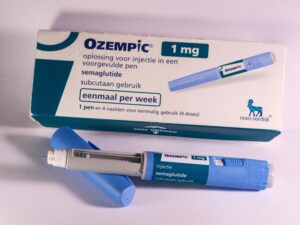Inside your body is a protective mechanism called the immune system. It defends you against bacteria, microbes, viruses, toxins, and parasites that may invade the body.
Unfortunately the first time the body is threatened by a particular invader, it can take several days to build up the antibody response. For many dangerous pathogens, such as the measles virus or the whooping cough bacteria, a few days is too long. The infection can spread throughout the body and kill the person before the immune system can fight back.
Vaccines help the body develop disease-fighting capabilities without making a person sick. They accomplish this by tricking the body into believing it already has the disease that one is vaccinated against.
The immune system identifies these foreign substances (antigens), then the immune system develops proteins ( antibodies) . They fight the infection by killing the antigens. These antibodies are produced by white blood cells called lymphocytes, also called B cells. The main purpose of these cells is to produce antibodies.
The body stores these antibodies so they are available to fight off the disease if exposed later on. However, antibodies are disease-specific, so previously acquired chickenpox antibodies will be of no use to fight another disease.
It should be noted that when the actual disease infects a person the antigens multiply at an astounding rate until there is a full-blown infection. A vaccine provides just enough of these antigens for the body to recognize them and complete the immune response process, thereby protecting the person from the disease, should they be exposed in the future.
There are two main types of vaccines:Live- attenuated and inactivated vaccines.
Live-attenuated Vaccines
Live-attenuated means alive , but very weak. These vaccines are made with viruses or bacteria that are weakened to a level so they can only reproduce about 20 times in the body. By comparison, natural viruses and bacteria reproduce thousands of times. When the vaccine is made, the virus or bacterium is weakened enough that it is still alive and able to reproduce, but can not cause serious illness. The weakened virus or bacteria causes the immune system to produce antibodies to fight the disease in the future.
Live-attenuated vaccines can cause very mild illness in a small percentage of people. These side effects are usually limited to a low-grade fever or runny nose. Five to ten percent of children who receive the chickenpox vaccine develop a few spots, but not the full blown case of the illness. Examples of live-attenuated vaccines are MMR (measles, mumps, and rubella), chicken pox and certain types of influenza.
As with any drug, there is the potential for side effects. Vaccine side effects are generally pretty mild and limited to soreness at the injection site, headache, or a low-grade fever. Although quite rare, serious reactions are possible. If you suspect a severe reaction, call the doctor immediately.
Inactivated vaccines
When inactivated vaccines are made, the bacteria or viruses (usually bacteria) are completely killed using a chemical, typically formaldehyde. The dead pieces of the disease-causing organisms are inserted into the vaccine. Utilizing dead antigens means these vaccines wear off over time, therefore multiple does of the vaccine is required to provide optimum protection. The advantage of using inactivated vaccines is that there is zero chance of developing any disease-related symptoms. Allergic reactions are still possible but exceptionally rare.
Examples of inactivated vaccines are hepatitis A, hepatitis B, poliovirus
haemophilus influenzae type B, meningococcal, pneumococcal and the injected form of Influenza vaccine.
Other than the antigen, there are a few ingredients that have to be included to make it effective.
Sometimes Chemicals are added to act as stabilizers so the vaccine remains potent. These chemicals are regulated by the Food and Drug Administration to guarantee their safety and are normally found only in trace amounts.
A disinfectant is required in multi-dose vials so that any foreign organism that might enter the vial will be killed instantly. Thimerosal has been the most popular, but has been largely phased out to concerns of adverse reaction caused by the chemical. Multi-dose vials are being phased out in favor of single-dose vials.Thimerosal is currently present only in trace amounts in the influenza vaccine.
Once a vaccine has been developed, the testing process is conducted in four phases over a period of many years.
Health care professionals or consumers who think that a serious side effect has occurred from receiving a vaccine can file a report via the Vaccine Adverse Reporting System.
The Vaccine Safety Datalink Project provides data on millions of people regarding their vaccination histories and medical outcomes. This is monitored by the National Center for Health Statistics’ Research Data Center.
Vaccine Myths
Vaccines cause autism. This myth started with a fraudulent study by Dr. Andrew Wakefield. The study was conducted on only12 children. It contained many errors, poor methodology, and falsified data. As it turns out, Dr.Wakefield had a conflict of interest. He was being funded by a group of lawyers suing the vaccine manufacturers. Dr. Wakefield has since lost his medical license and the medical journal retracted the study. However, this dangerous myth prevails, resulting in many children not being immunized. There is NO VALID SCIENTIFIC EVIDENCE linking the MMR vaccine to autism.
Natural immunity is better than vaccine-acquired immunity. The dangers of this method far outweigh the benefits. There is a 1 in 500 chance of dying from contracting measles, compared to a 1 in a million chance of suffering a severe allergic reaction from the MMR vaccine.
Vaccines contain toxins. People have concerns over formaldehyde, mercury or aluminum in vaccines. The trace amounts—amounts approved the FDA—are not toxic. In fact, the CDC concluded that formaldehyde is produced at higher rates by the human body. There is currently no scientific evidence that the low levels of mercury and aluminum pose any danger.
Vaccines aren’t worth the risk. Children have been vaccinated for decades and there has never been a credible study linking vaccines to long-term health conditions. The overall incident rate of severe allergic reactions to a vaccine is one case per one or two million injections.
We don’t need to vaccinate because infection rates are already so low in the United States. Thanks to “Herd Immunity,” so long as a large majority of people are immunized, The unimmunized will be protected. This is important because a certain segment of the population, such as infants, pregnant women, elderly, and those with a compromised immune system can’t receive vaccines. However if too many do not vaccinate themselves or their children, they provide the opportunity for viruses and bacteria spread among the population.
Also with international travel common, today, visiting a country where the disease might be common could result in carrying the disease back to the States, where an unvaccinated person will be at a far greater risk of getting sick if he or she is exposed.
Vaccines are one of the greatest accomplishments of modern medicine. Life was cruel for children before vaccines. Large portions of the population fell prey to illnesses like measles, smallpox, whooping cough, or rubella, to name a few. Today these diseases can be prevented by a simple injection. People should not forget how many deaths and illnesses vaccines have prevented, and how vaccines continue to protect us.










